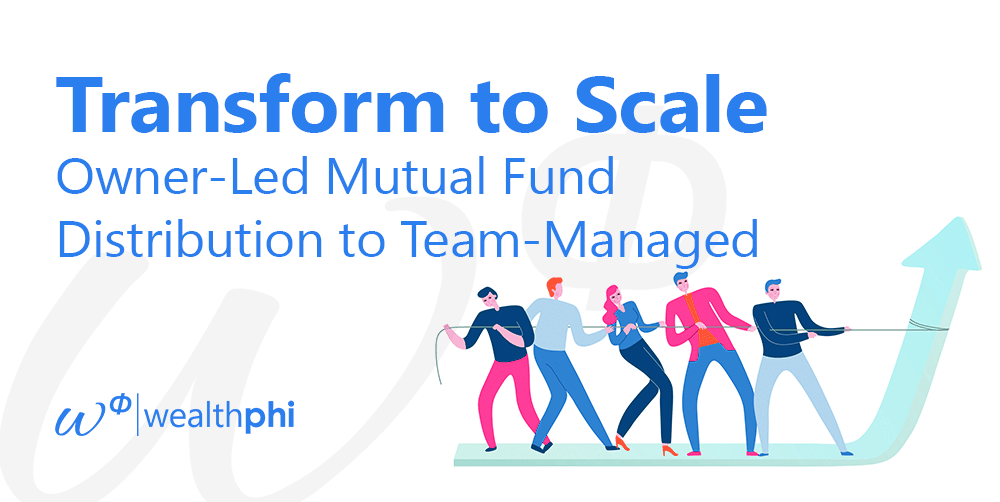
The approach marks a pivotal shift in operational dynamics of Mutual Fund Distribution, signaling a recognition of the strength inherent in collective effort. Amidst a backdrop of heightened market returns, increased savings rates, and expanded market penetration, Mutual Fund Distributors (MFD) have experienced a notable upswing in growth. Yet, as with any business endeavor, a relentless pursuit of growth without adequate support structures imperils long-term viability, akin to a tree with lush branches but weak roots.
Things at stake
Identify the signs
However, the growing pains become palpable as client numbers swell, stretching the owner's bandwidth thin. The consequence? Some clients may feel neglected, leading to shallower, more transactional relationships. The lack of attention, with high-value clients vying for more time, while others perceive a lack of in-depth analysis, threatens overall client satisfaction and retention. It's a telltale sign that the current modus operandi is reaching its threshold.
Navigating this transition necessitates a strategic approach, beginning with pre-emptive measures in expectation of operational strain. Recognizing patterns indicative of impending overload—missed client interactions, unfulfilled promises, or stretched meeting schedules—provides a crucial window for intervention. Once the need for assistance is acknowledged, the phased introduction of support mechanisms becomes imperative.
Act promptly
Addressing the 'what' entails augmenting support functions across service, sales, and administrative domains. This might encompass tasks such as document preparation, research, transaction execution, and client engagement facilitation. Concurrently, integrating sales support personnel, adept at client meeting preparation and follow-up, alongside seasoned sales staff, can broaden the scope of client engagement and business development efforts.
Change to scale
The 'why' of this transition is underpinned by the imperative to mitigate client dissatisfaction, liberate time for strategic initiatives, and foster a more professional client engagement ethos. Sales support not only shoulders operational burdens but also ensures parity in meeting preparedness, fostering constructive client interactions. Moreover, early investment in sales personnel promises long-term dividends, paving the way for scalable business growth.
Execute with precision
Conclusion
The transition from an owner-centric to a team-driven Mutual Fund Distribution model embodies a strategic imperative for long-term growth and resilience. By embracing this evolution, Mutual Fund Distributors can harness the collective strengths of their team, unlocking new avenues for client engagement, business development, and ultimately, sustainable growth.
Wealthphi can be a valuable partner in your growth journey. Connect with us to know more on the tools that can support you and your team.





